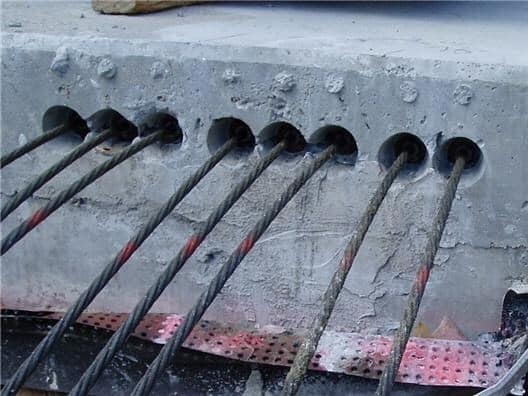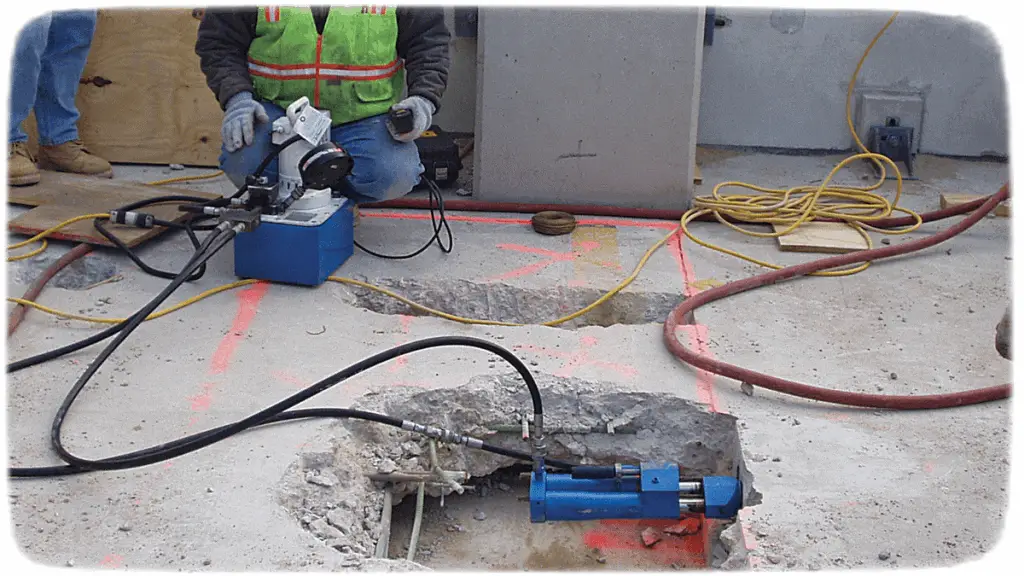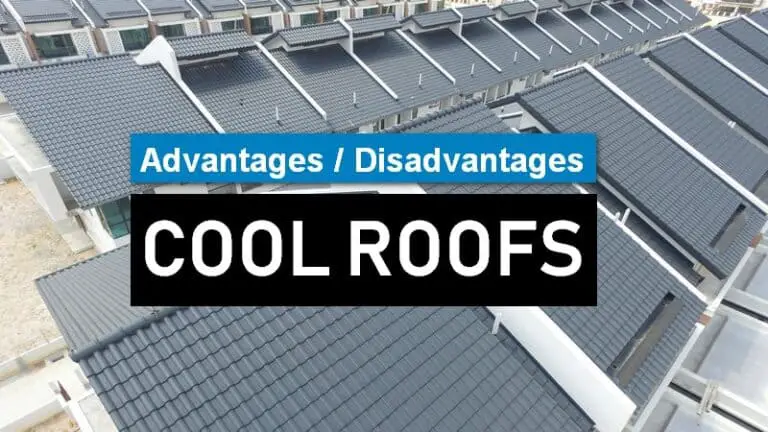How Much Does Post Tension Cable Repair Cost? (Is It Easy to Fix?)

Post-tension cables are a type of cable used in construction projects. They are used to keep things in place and can be very helpful in stabilizing a structure.
Post-tension cables are prestressing steel cables inside plastic protective ducts or sleeves, each with anchors on each end to transmit the forces into the structure. The cables are placed in the wet concrete before it sets and are tensioned after the concrete has hardened. This process creates a very strong and stable slab that can be used for parking garages, bridges, and other large structures.
No one wants to have to deal with a post-tension cable that has been damaged. It can be a challenge to find someone who is qualified to repair it and make sure that it is done properly.
There are some things that you can do in order to try to extend the life of the cable and prevent it from being damaged any further. If you do end up having to get the cable repaired, it is important to find a qualified professional who will be able to do the job properly.
So, how much does post-tension cable repair cost?
The typical cost of post-tension cable repair is $1,000. A single cable repair will normally cost between $800 and $1,200. This price varies depending on the size of the job, the work needed, and any extra damage discovered by the contractor during the inspection process.
How To Seal Post Tension Cables?
When post-tension cables are terminated, the cable ends protrude out of the concrete. If these cable ends are not properly sealed, they can be exposed to the elements and rust. This can cause foundation issues as the rust will eat away at the concrete.
There are a few ways to seal post tension cables. One way is to cover the cable ends with a concrete patch. This will protect them from the elements and prevent them from rusting.
Another way to seal them is by using a corrosion inhibitor. This will help to keep the cables from rusting and will also help to protect the foundation.
Over time, these cables can become corroded, which can lead to significant damage. One way to protect these cables is to seal them with a coat of sealant.
There are a few things you need to consider before sealing post tension cables. First, you need to make sure that the cable is clean and free of any debris or corrosion. Next, you need to identify the type of sealant that will work best for your application. Finally, you need to apply the sealant in a consistent manner so that it will provide maximum protection.
How Deep Are the Cables in a Post Tension Slab?
Since the cables are tensioned after the slab is poured, they are typically placed much deeper than the reinforcing bars. The depth of the cables will depend on a number of factors, including the thickness and strength of the slab as well as the amount of tension that is required. In most big construction cases, like bridges and overpasses, the cables will be buried at least 18 inches below the surface of the slab.
A residential post-tensioned concrete slab will typically be 8 inches thick and use 3000 psi of concrete. Once the concrete has gained strength to 2000 psi, typically within the 3 to 10 days recommended by PTI, the tendons are stressed
How Long Do Post Tension Cables Last?
The answer, unfortunately, is not simple. There are many factors that can affect the lifespan of a post tension cable. Some of the factors that can influence how long they last include the weather, the type of soil they are installed in, and how well they are maintained.
One thing that is certain is that post tension cables do not last forever. Over time, they will eventually need to be replaced. How long they last depends on a number of factors, but most cables should last for at least 20–30 years. If they are properly maintained, they may even last longer than that.
Are Post Tension Cables Repairable?

The answer is yes! The Post tension cable can be repaired. The question is whether it is worthwhile to repair the post-tension cable. It will be determined by the extent and nature of the damage that has been done.
Engineers inspect, test, and design post-tensioning systems to ensure that they will meet the required performance. In some cases, cables may become damaged after installation. While it is possible to repair a post-tension cable, the process is not always straightforward and should only be attempted by a qualified professional or post tension repair contractors.
If there is corrosion in the post-tensioning cables, it may cause the concrete to break down. Corrosion can develop in both grouted and ungrouted post-tension structures, requiring post-tension cable maintenance when moisture and air are present in cavities along the cable tendon.
The first step in repairing a post-tension cable is to identify the location and cause of the damage. This can be done using various methods, such as ultrasound or x-rays. Once the damage has been located, the appropriate repair method can be selected.
If the damage is confined to a single cable, it may be possible to simply cut out the damaged section and splice in a new piece. However, if multiple cables are affected or if the damage is more extensive, a more comprehensive repair may be necessary.
Is It Easy to Fix Post Tension Cable?
What happens when a post-tension cable breaks? Is it easy to fix post tension cable?
Well, it is important to know how to fix the post-tension cable in order to maintain the safety of the structure and to continue working on it.
The process of fixing a post-tension cable is not difficult, but it is important to take caution while working with the cable. The first step is to identify the location of the break in the cable. Once the break has been located, the cable must be cut above and below the break.
Care should be taken not to cut any other cables accidentally. Next, a steel sleeve should be placed over each end of the cut cable. The sleeves should be secured in place with adhesive or clamps.
What Happens if You Cut a Post Tension Slab Cable?
Everyone makes errors. For instance, you may have accidentally cut post tension cable on your property and must now determine what to do.
There are no legal implications, which is wonderful news. But here are some things you should know about what occurs when a post-tension cable is severed:
If you cut one of these wires by mistake, it will not fall on your head or do any other harm. The tension in the cable is holding it aloft.
When you cut through it, the only thing that happens is that it becomes slightly less tight than before (which may not even be noticeable).
If you cut through any other high-tensile steel wire rope, something similar would happen.
It might jeopardize the building’s structural stability. The post-tensioned concrete slab will begin to rise and split as the first thing to happen.
As a result, nothing will keep the post-tension slab in place.
If not fixed immediately, the procedure might cause structural damage to your home or structure. Assume you also cut a post-tension cable.
It may not always be evident since paint or other coatings used during building might obscure them (unless when dealing with exposed post-tension cables).
If you cut a post-tension cable while working on your house or business, your foundation may become unstable.
If it is on the inside, it may even sink unevenly toward one. The metal strands inside the cable have been cut, significantly weakening them.
The post-tension cable is formed of steel and is wrapped around a core of cement, sand, and water.
There is a coating on the cable to prevent corrosion. The entire structure is then buried beneath the post-tension concrete slab, making it invisible.
How Much Do Post-Tension Cables Cost?
The cost of post tension cable, whether material or installation, are an important consideration in every project.
If you need a new post-tension cable, you should consult with a competent contractor or engineer who can advise you on the type and size of post-tension cable you require.
Post-tension cables can cost different amounts depending on their size, length, and how many are needed.
Post tension cable repair cost typically between $1.00 and $1.65 per pound; however, this might vary based on the material used and the site where they are put. Some contractors may also charge extra for putting in post-tension slabs, which are needed so that post-tension cables can be put in.
This cost, however, is typically included in their entire price offer. The following factors influence the pricing of post-tension cables:
1. Number of Cables
The more wires required, the greater the overall cost since effective installation involves more materials and manpower.
2. Dimensions
If you require long post-tension cables (longer than typical), the overall cost will rise since longer post-tension cables require more material than shorter ones.
3. Soil
The type of soil in which the cable is embedded, and whether or not special tools or equipment are required to complete the repair.
4. Permits or special access
Additional costs may be incurred if the repair requires permits or special access.
Other considerations include the project’s complexity, location, and building structure.
In the event of a post tension cable failure, it can be costly and time-consuming to repair. The cost of repairing a post tension cable depends on the severity of the damage, but is typically in the thousands of dollars.
Final Thought
To figure out how much it costs to fix a post-tension cable, you need to know what kind of damage has been done to it.
If the damage is modest, it will be easy for a contractor to repair. However, if there is extensive damage, the cost of repairs will be higher.
In the event that the damage is not repairable, it may be necessary to replace the cable.
Don’t put it off any longer. Repair that post-tension wire as soon as feasible!






